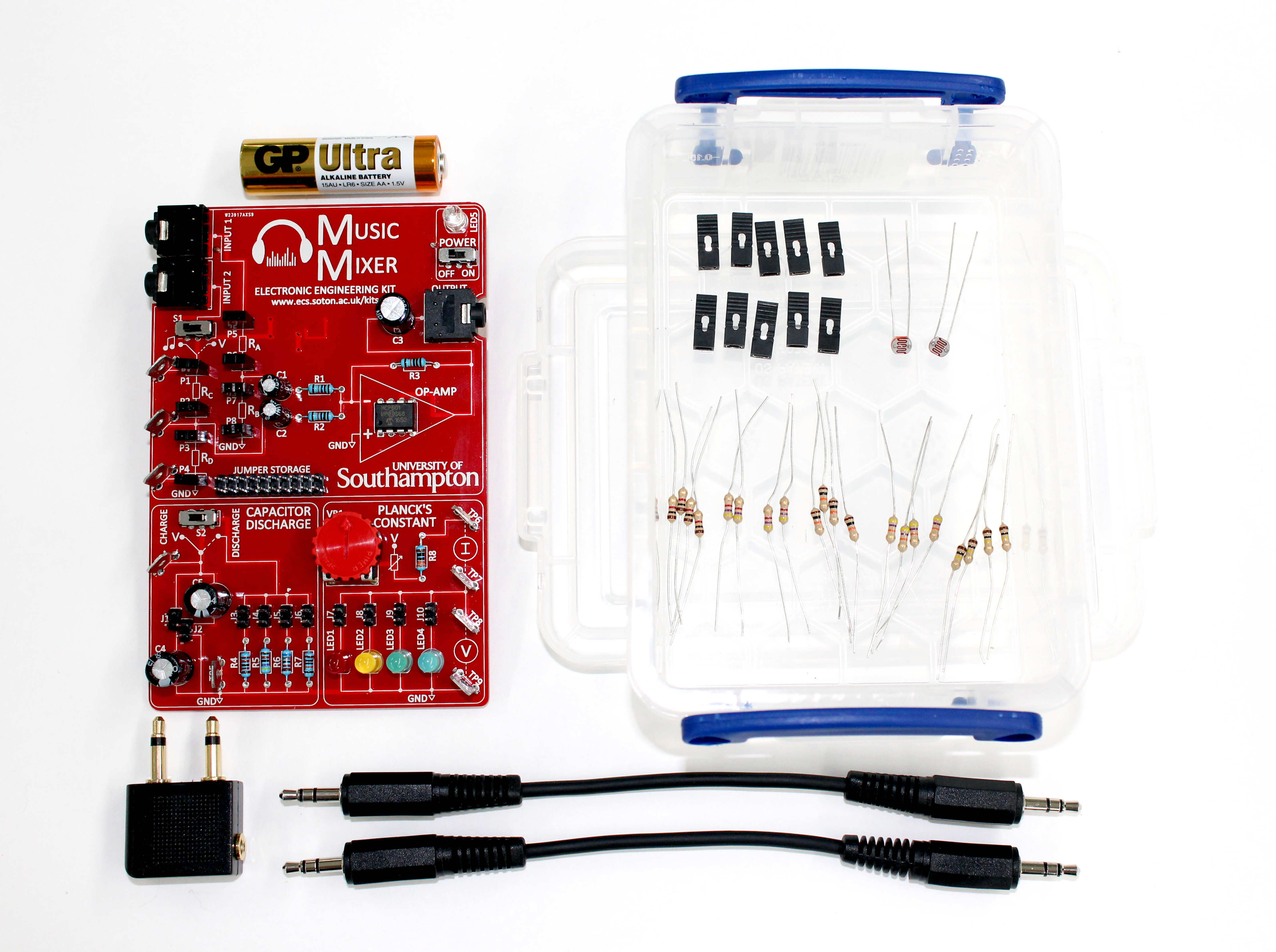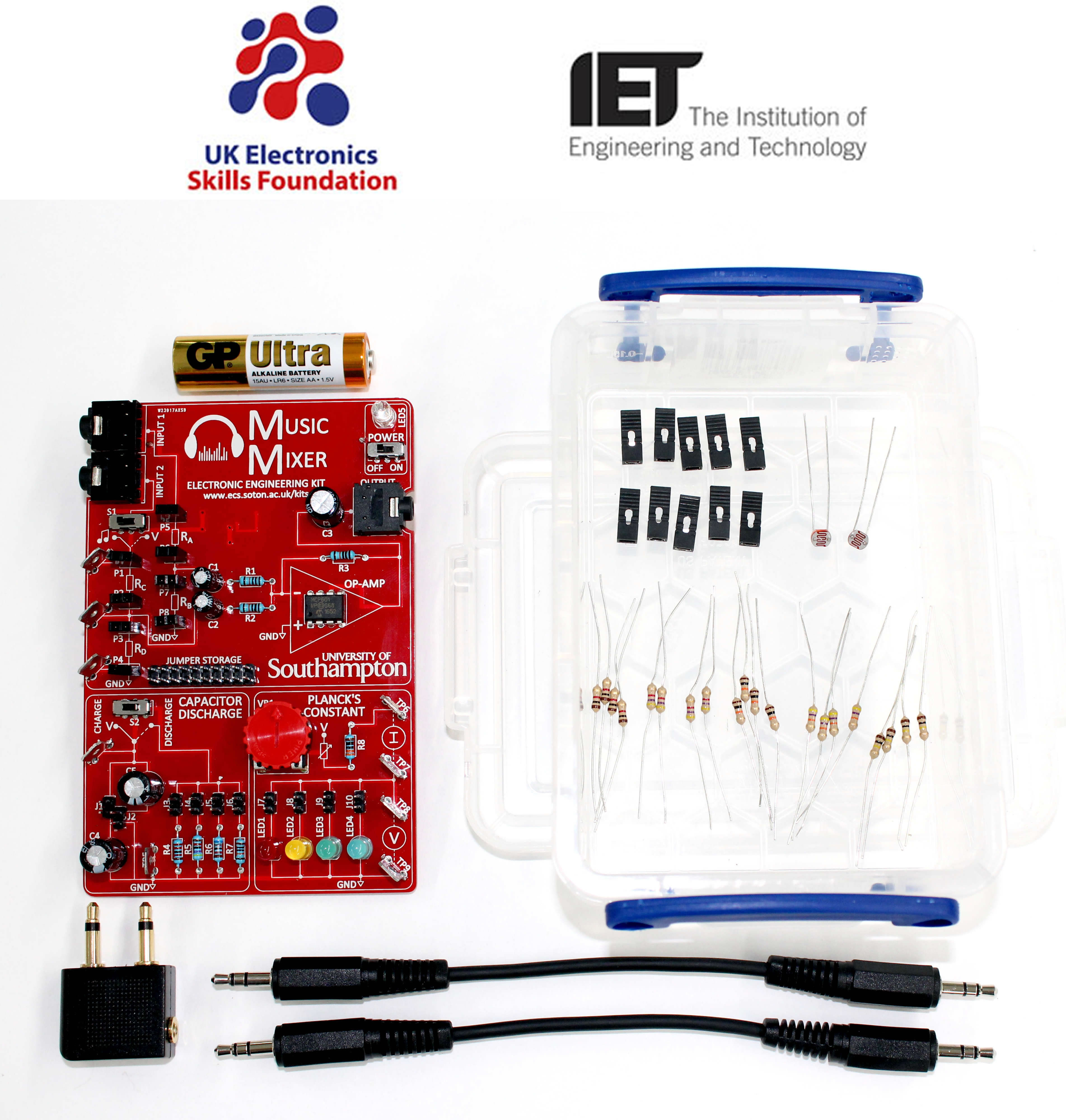

Video Tutorial
This tutorial video walks viewers through the typical use of the Planck’s Constant part of the kit, and the experiment described in the accompanying exercise notes.
Video Tutorial
This tutorial video walks viewers through the typical use of the Capacitor Discharge Section part of the kit, and the experiment described in the accompanying exercise notes.
Video Tutorial
This tutorial video walks viewers through the typical use of the Music Mixer and the experiment described in the accompanying exercise notes.
Operational Amplifiers
This video explores the functionality of an operational amplifier, how it is used in the Music Mixer kit, and some of the other uses of this widely used electronic component.
Potential Dividers
This video explores the potential dividers on the Music Mixer kit, how they are used to mix the two input channels, and the wider applications of this technology.
